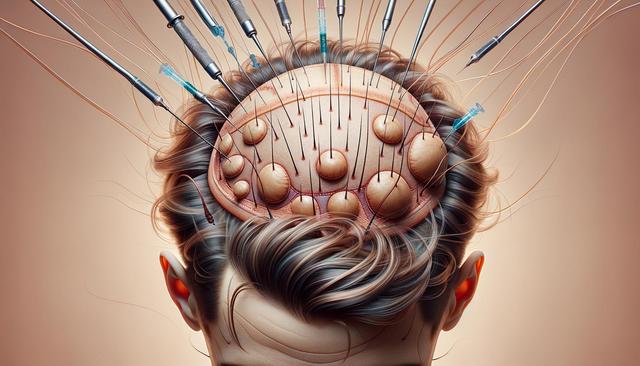Understanding the Hair Transplant Procedure
Hair transplant is a surgical procedure designed to address hair loss or thinning by transferring healthy hair follicles from one part of the scalp to areas experiencing baldness. This process helps create a fuller and more natural-looking hairline. The most commonly used techniques include Follicular Unit Transplantation (FUT) and Follicular Unit Extraction (FUE). Both methods are effective, and the choice depends on factors such as the extent of hair loss, donor hair availability, and personal preferences.
FUT involves removing a strip of scalp from the donor area, usually the back of the head, and dissecting it into individual follicular units. FUE, on the other hand, extracts follicles one by one using a specialized tool. While both methods can yield excellent results, FUE is often preferred for its minimal scarring and quicker recovery. Regardless of the technique, the goal is the same: to achieve a natural hair appearance that blends seamlessly with existing hair.
Who Is a Good Candidate for Hair Transplant?
Not everyone experiencing hair thinning is an ideal candidate for a hair transplant. Several factors determine eligibility for the procedure, including the type and pattern of hair loss, the quality and density of donor hair, and overall health. Candidates typically include:
- Individuals with male or female pattern baldness
- Those with hair loss resulting from injury or burns
- People who have stable hair loss and sufficient donor hair
- Patients in good general health who can tolerate minor surgical procedures
A consultation with a qualified specialist is essential to assess scalp condition, discuss expectations, and develop a personalized treatment plan. This ensures that the procedure is both safe and effective for the individual’s specific needs.
What to Expect Before, During, and After the Procedure
Preparing for a hair transplant involves several important steps. Patients are usually advised to stop smoking and avoid certain medications that may interfere with healing. On the day of the procedure, local anesthesia is applied to ensure comfort. The duration of the surgery can vary, typically lasting between 4 to 8 hours, depending on the number of grafts being transplanted.
After the procedure, patients can expect some swelling, redness, or mild discomfort, which usually subsides within a few days. Post-operative care is crucial for optimal healing and includes:
- Keeping the scalp clean and avoiding direct sunlight
- Refraining from strenuous activities for at least a week
- Following prescribed medication and care routines
- Attending follow-up appointments to monitor progress
Hair shedding may occur within the first few weeks, which is a normal part of the process. New hair growth typically begins around 3 to 4 months post-surgery and continues to thicken over time.
Results and Long-Term Expectations
One of the major advantages of a hair transplant is that it offers a long-lasting solution to hair loss. Since the transplanted follicles are resistant to the hormone that causes hair thinning, the results are more permanent compared to other treatments. However, it’s important to have realistic expectations. Full results can take up to 12 months to become visible, depending on individual growth rates and the extent of the transplant.
Many individuals find that their new hair blends well with their existing strands, creating a natural look. To maintain the health and appearance of transplanted hair, patients are often advised to adopt good hair care practices and consult their specialist if they notice any unusual changes. Although the transplanted hair is permanent, the non-transplanted hair may continue to thin over time, which could require additional treatments to maintain uniform density.
Advantages and Considerations of Hair Transplants
Hair transplants offer several notable benefits for people seeking a lasting solution to hair thinning. These include:
- Improved self-esteem and confidence
- A natural-looking hairline that enhances appearance
- Minimally invasive techniques with relatively quick recovery
- Cost-effectiveness over time compared to repeated non-surgical treatments
Despite these advantages, there are also important considerations. The procedure may not stop future hair loss in untreated areas, and some individuals might require multiple sessions. Additionally, results vary based on factors like scalp health, hair type, and the surgeon’s expertise. It’s essential to research thoroughly and choose a reputable clinic that specializes in hair restoration procedures for the best outcome.
Conclusion: Making an Informed Decision
Hair transplant can be a transformative option for individuals dealing with hair thinning or baldness. When performed by experienced professionals, it delivers natural-looking results that can significantly enhance one’s appearance and confidence. While not a one-size-fits-all solution, it remains a well-regarded choice for those with suitable candidacy and realistic expectations. Consulting with a specialist and understanding the procedure in depth are key steps toward achieving desired outcomes and long-term satisfaction.




Leave a Reply